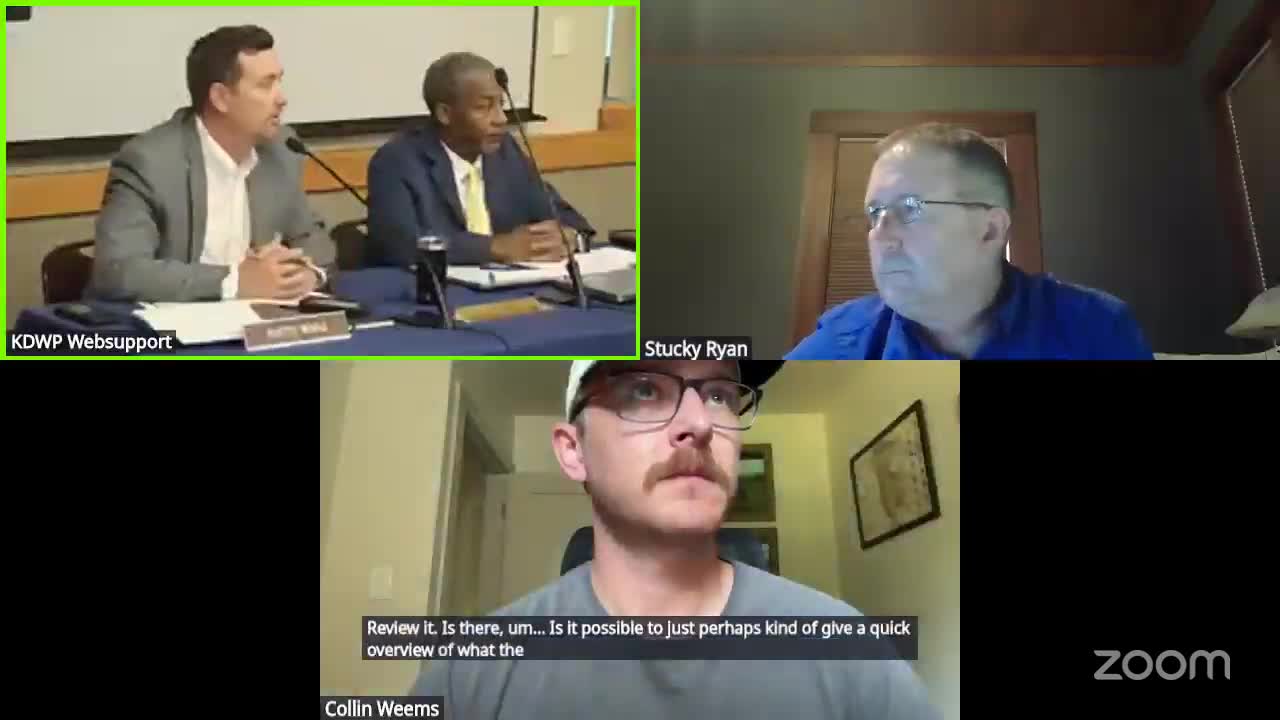Kansas Wildlife Commission considers nonresident waterfowl hunting regulations amid rising pressures
August 14, 2025 | Department of Wildlife & Parks, State Agencies, Organizations, Executive, Kansas
This article was created by AI summarizing key points discussed. AI makes mistakes, so for full details and context, please refer to the video of the full meeting. Please report any errors so we can fix them. Report an error »

In a meeting filled with pressing concerns for Kansas' wildlife and hunting community, the Kansas Department of Wildlife and Parks (KDWP) Commission gathered on August 14, 2025, to address the growing pressures on public lands from nonresident hunters. As the sun dipped low, casting a warm glow over the conference room, commissioners voiced their worries about the increasing influx of nonresidents seeking to enjoy the state's rich hunting opportunities.
The discussion centered around the current licensing structure, which generates approximately $2.4 million annually. A proposal was put forth to modify the nonresident license fees, suggesting a $100 stamp to help fund conservation efforts. This change aims to balance the needs of local hunters with the rising number of nonresidents who are increasingly drawn to Kansas' prime hunting grounds, particularly in Southeast Kansas, known for its abundant waterways and wildlife.
Commissioners expressed concern that Kansas residents, who contribute to the upkeep of these lands through taxes, should have priority access. The conversation highlighted a growing trend: as neighboring states impose stricter regulations, more hunters are flocking to Kansas, leading to overcrowding and heightened competition for resources. One commissioner noted that this issue is not unique to Kansas, with several states implementing similar measures to manage hunting pressures.
The meeting also touched on the need for data collection to determine the optimal capacity of public lands. Understanding how many hunters can be accommodated without harming the environment is crucial. The commissioners debated the balance between resident and nonresident allocations, emphasizing that any changes must be well-reasoned and considerate of both groups' interests.
As the meeting progressed, the urgency of the situation became clear. With neighboring states tightening their hunting regulations, Kansas risks becoming a last refuge for hunters seeking open lands. The commissioners recognized the need for swift action to ensure that local hunters are not sidelined and that the state's natural resources are preserved for future generations.
In conclusion, the KDWP Commission's discussions reflect a critical moment for Kansas' wildlife management. As pressures mount from both within and outside the state, the path forward will require careful consideration of regulations, conservation efforts, and the voices of the community. The decisions made in these meetings will shape the future of hunting in Kansas, ensuring that it remains a sustainable and accessible activity for all.
The discussion centered around the current licensing structure, which generates approximately $2.4 million annually. A proposal was put forth to modify the nonresident license fees, suggesting a $100 stamp to help fund conservation efforts. This change aims to balance the needs of local hunters with the rising number of nonresidents who are increasingly drawn to Kansas' prime hunting grounds, particularly in Southeast Kansas, known for its abundant waterways and wildlife.
Commissioners expressed concern that Kansas residents, who contribute to the upkeep of these lands through taxes, should have priority access. The conversation highlighted a growing trend: as neighboring states impose stricter regulations, more hunters are flocking to Kansas, leading to overcrowding and heightened competition for resources. One commissioner noted that this issue is not unique to Kansas, with several states implementing similar measures to manage hunting pressures.
The meeting also touched on the need for data collection to determine the optimal capacity of public lands. Understanding how many hunters can be accommodated without harming the environment is crucial. The commissioners debated the balance between resident and nonresident allocations, emphasizing that any changes must be well-reasoned and considerate of both groups' interests.
As the meeting progressed, the urgency of the situation became clear. With neighboring states tightening their hunting regulations, Kansas risks becoming a last refuge for hunters seeking open lands. The commissioners recognized the need for swift action to ensure that local hunters are not sidelined and that the state's natural resources are preserved for future generations.
In conclusion, the KDWP Commission's discussions reflect a critical moment for Kansas' wildlife management. As pressures mount from both within and outside the state, the path forward will require careful consideration of regulations, conservation efforts, and the voices of the community. The decisions made in these meetings will shape the future of hunting in Kansas, ensuring that it remains a sustainable and accessible activity for all.
View full meeting
This article is based on a recent meeting—watch the full video and explore the complete transcript for deeper insights into the discussion.
View full meeting
